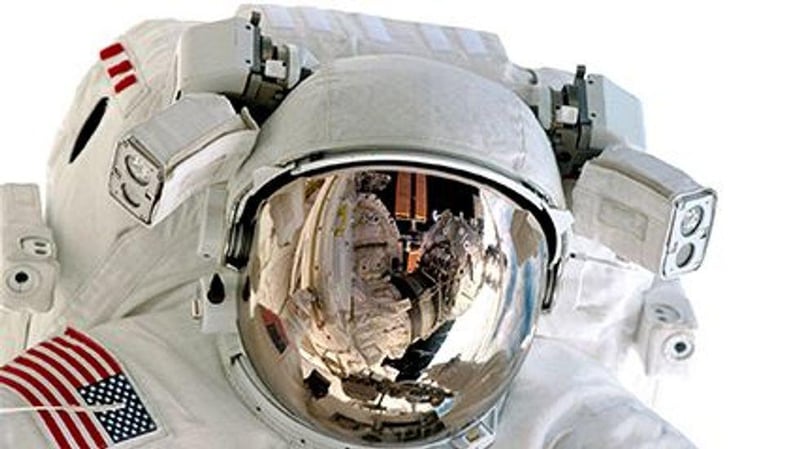Manténgase sano!

- Robert Preidt
- Posted October 25, 2021
One Downside to Space Travel: Back Pain
You can ride a rocket into space to escape Earth, but one thing you might not escape is back pain.
Back pain could turn out to be a major problem for the growing number of space travelers, and learning more about it could also benefit Earth-bound back patients, researchers say.
Low gravity, the physical stress of riding in a rocket and nutritional changes may all contribute to back pain among space travelers, according to the Johns Hopkins team that reviewed past research on how space travel affects the spine.
"Insight into back pain in space travelers may provide usable information to treat back pain in other populations," said study co-author Dr. Steven Cohen, a professor of anesthesiology and critical care medicine at Johns Hopkins and a retired Army colonel.
One study, which analyzed 722 space flights, found that 52% of astronauts had some form of back pain in the first two to five days of space travel. While 86% of those cases were mild, the pain was sufficient to interfere with the ability to complete tasks.
Another study of military helicopter pilots and crew found that nearly half of those who experienced fluctuating gravitational forces reported low back pain. And the pilots were nearly three times more likely to develop an injury to the soft connective cushioning in their lower spine (lumbar disc herniation) than the general population.
Meanwhile, a 2010 study from the National Aeronautics and Space Administration found that astronauts have four times the odds for disc herniation. And the risk is even higher in the first year after they return to Earth.
The S-shaped bend in the human spine enables it to resist gravity, remain flexible and absorb weight and impact, explained lead author Dr. Radostin Penchev, a resident physician at Johns Hopkins Hospital in Baltimore.
"If reduced gravity allows this curvature to straighten, this not only could be a cause of acute pain in astronauts, but also could affect the stability of their spine when they return to Earth," he added in a Hopkins news release.
His team also examined past studies on preventing, diagnosing and treating back pain in astronauts.
Further study of these methods -- including specific exercises and the use of specialized suits -- could provide clues for treating back pain in the estimated 80% of people who experience back pain in their lifetime, according to authors of the study published recently in the journal Anesthesiology.
Resistance exercise such as isometrics, squats, lunges and bench pressing have been central to back pain prevention among astronauts, and space stations are equipped with exercise machines and other resistance training tools.
Along with resistance exercise, other methods used to prevent back pain in astronauts include massage, nutritional supplementation to increase vitamin D and caloric intake, neuromuscular electrical stimulation, and negative pressure devices.
Penchev noted that science fiction "has popularized the spinning space station that uses centrifugal force to mimic gravity," but said specialized suits that provide spinal resistance similar to that experienced under Earth's gravity may be more realistic and effective.
More information
The U.S. National Institute of Arthritis and Musculoskeletal and Skin Diseases has more on back pain.
SOURCE: Johns Hopkins Medicine, news release, Oct. 21, 2021
